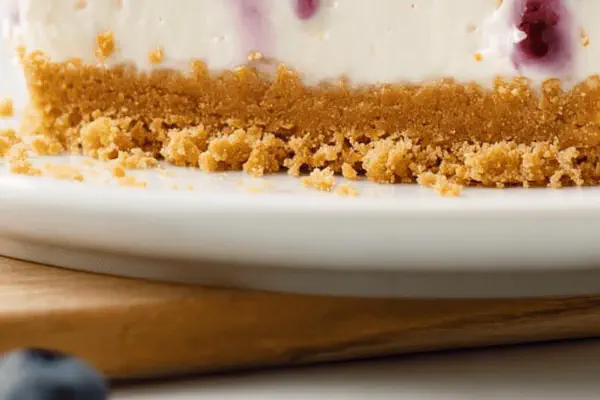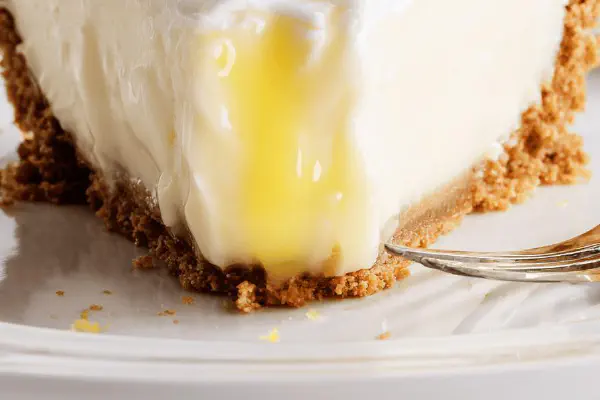Lemon Mascarpone Cannolis

By Emma
Certified Culinary Professional
Ingredients
- 1 whole egg
- 1 large egg yolk
- 30 ml limoncello (replace marsala)
- 15 ml apple cider vinegar (replace white wine vinegar)
- 15 ml water
- 160 g all-purpose flour (approx 1 cup minus 1 tbsp) – reduced for a lighter dough
- 25 ml powdered sugar (about 1 1/2 tbsp, less than original)
- 2.5 ml fine salt (about 1/2 tsp)
- 25 ml cold unsalted butter, diced (scant 2 tbsp)
- 1 lightly beaten egg white (for sealing shells)
- 1 container 250 g mascarpone cheese
- 90 g granulated sugar (less than original)
- 250 ml lemon curd (homemade or good quality store-bought)
- 1/2 tsp vanilla extract (added twist)
- Vegetable oil for frying
- Cornmeal for dusting (optional, to prevent sticking)
About the ingredients
Method
- 1. Whisk together whole egg, egg yolk, limoncello, apple cider vinegar, and water until combined. Keep chilled while prepping dry ingredients.
- 2. Combine flour, powdered sugar, salt in food processor or bowl. Cut in cold butter till pea-size crumbs form.
- 3. Add liquid mixture gradually, pulse or stir till dough starts forming a ball. Use hands to bring dough fully together. If too dry, add a drop more water, but sparingly.
- 4. Turn dough onto floured surface. Knead briefly, about 2 minutes, just until smooth. Wrap tightly in plastic. Refrigerate at least 50 minutes (can stretch to 70 if busy). Rest essential for gluten to relax and easier rolling.
- 5. While dough chills, mix mascarpone, granulated sugar, and vanilla extract. Fold in lemon curd gently but thoroughly. Keep refrigerated until assembly. Taste for balance; more lemon curd or sugar can be added to your liking.
- 6. Heat oil in deep fryer or heavy pot to 185°C (365°F). Use candy thermometer for accuracy. Bubbles at edge of wooden spoon in oil mean oil’s ready.
- 7. On floured surface, cut dough into 4 equal pieces. Shape roughly rectangular for easier rolling. Use pasta machine or rolling pin, gradually thinning dough to about 1 mm thickness. Lightly dust dough with flour or cornmeal occasionally to prevent sticking – dust too lightly and dough tears; too much and shells won’t stick to themselves properly.
- 8. Cut dough sheets into 7.5 cm (3 inch) squares. Brush one edge with beaten egg white, roll tightly around metal cannoli forms. Seal, trim excess if needed. Cornmeal dust helps prevent excessive stickiness during rolling.
- 9. Fry few shells at once, about 1.5 to 2.5 minutes. Look for rich golden color, shells becoming firm and crackly. Less than 1 minute and dough remains pale and raw inside; over 3 minutes and shells may burn or bubble excessively. Remove carefully, drain on paper towels. Let shells cool enough to handle but fill while still slightly warm to avoid moisture collapsing crispness quickly.
- 10. Slide shells gently off metal forms once warm. Extremely hot shells stick; wait until just cooled. Store empty shells in airtight container if not filling immediately (only up to few hours), cooler temperatures keep crunch better.
- 11. Using a large piping bag fitted with star nozzle, fill shells with mascarpone-lemon curd cream. Pipe from one end carefully till filling oozes slightly out the other end (indicates full).
- 12. Just before serving, dust with powdered sugar. Serve immediately for crisp contrast between shell and soft filling. Refrigerate leftovers but shells may lose crispness overnight.
- 13. If dough feels too sticky when rolling, refrigerate briefly between passes. Avoid over-kneading dough or it becomes tough. Adjust frying temp if shells brown too quickly on outside but raw inside—lower heat slightly.
- 14. For masked cheese substitute, try ricotta pressed dry for firmer texture. Lemon curd can be swapped for orange marmalade for variation, but watch for added sugar levels.
Cooking tips
Chef's notes
- 💡 Roll dough very thin—1 mm thickness crucial. Dust with flour or cornmeal lightly. Too much dust equals shells won’t stick. Too little dust tears dough. Rest dough minimum 50 minutes, better 70. Gluten needs chill to relax or dough snaps back when rolling. Use pasta machine if you have one, prevents overworking. Cold butter diced tiny helps flaky shell layers. Keep dough chilled between roll passes if sticky, avoids toughness later.
- 💡 Frying oil needs steady 185°C / 365°F. Watch bubbles around wooden spoon; rapid but small means ready. Too hot shells blacken fast outside, stay raw inside. Too cool shells turn greasy, lack crispness. Fry 1.5 to 2.5 minutes. Look for golden hue, audible crack when cooled. Remove shells quickly, drain on paper towels. Fill shells warm but not hot, else shell soggy and collapses. Shells store airtight, few hours max, crisp lost in fridge overnight.
- 💡 Sealing edges with beaten egg white is glue. Apply thin layer, roll quickly on cannoli forms. Cornmeal dust on shell stops sticky mess and helps release after frying. Cool shells slightly on form then slide off. Wait too long and shell sticks hard, tears risk. Use metal forms or substitute rigid tubes but shapes vary. Filling piping better with large star nozzle. Pipe until filling oozes out far end for full measure, gentle pressure key - too hard bursts delicate shell.
- 💡 Mascarpone blended with sugar and vanilla, then folded in lemon curd gently. Lemon curd quantity matters; too much makes filling runny, filling seeps into shell. Taste and adjust sugar or curd balance ahead of time. For texture twist, crushed nuts like pistachios fold in if filling too loose. Substitute ricotta pressed dry for mascarpone – coarser texture but more firm. Lemon curd swap with orange marmalade possible but watch extra sugar. Cold filling stays firmer, fill close to serving time.
- 💡 Leftover dough freezes well. Thaw fully before rolling to keep elasticity. Overworking dough toughens shells; knead briefly until smooth only. If dough tough after rest, let stand extra 10-15 min at room temp before rolling. For sticky dough mid-roll, chill briefly instead of adding water. Fry oil type affects flavor and smoke point; canola or peanut recommended. Powdered sugar dust just before serving, prevents shells becoming soggy. Kitchen torch can revive crisped shells after refrigeration if filled early.
Common questions
How to know when oil is ready?
Watch bubbles near wooden spoon gently rising. Rapid small bubbles mean 185°C reached. Too big or fast bubbles mean hot oil risking burnt shells. Slow bubbles means oil too cool, grease absorption goes up. Practical, visual cues better than thermometer alone sometimes.
Can I use ricotta instead of mascarpone?
Yes, but pressed dry ricotta is grainier, firmer. Mascarpone smoother, creamy. Use extra sugar or fold citrus zest for flavor lift. Texture difference notable but acceptable for variation or less richness.
What if shells aren’t crisp after frying?
Check oil temp first. Often oil too cool equals limp, greasy shells. Fry slightly longer if no color change, but beware burning. Drain well. If shells soft after storage, fill just before serving only. A quick blast with kitchen torch can restore crispness if needed.
How to store filled cannolis?
Crisp shell softens fast when filled. Store unfilled shells airtight at room temp few hours max. Filled cannolis better eaten same day; refrigerate leftovers but expect shell softening overnight. For best results, fill close to serving time. Leftover filling keeps longer in fridge tightly sealed.



